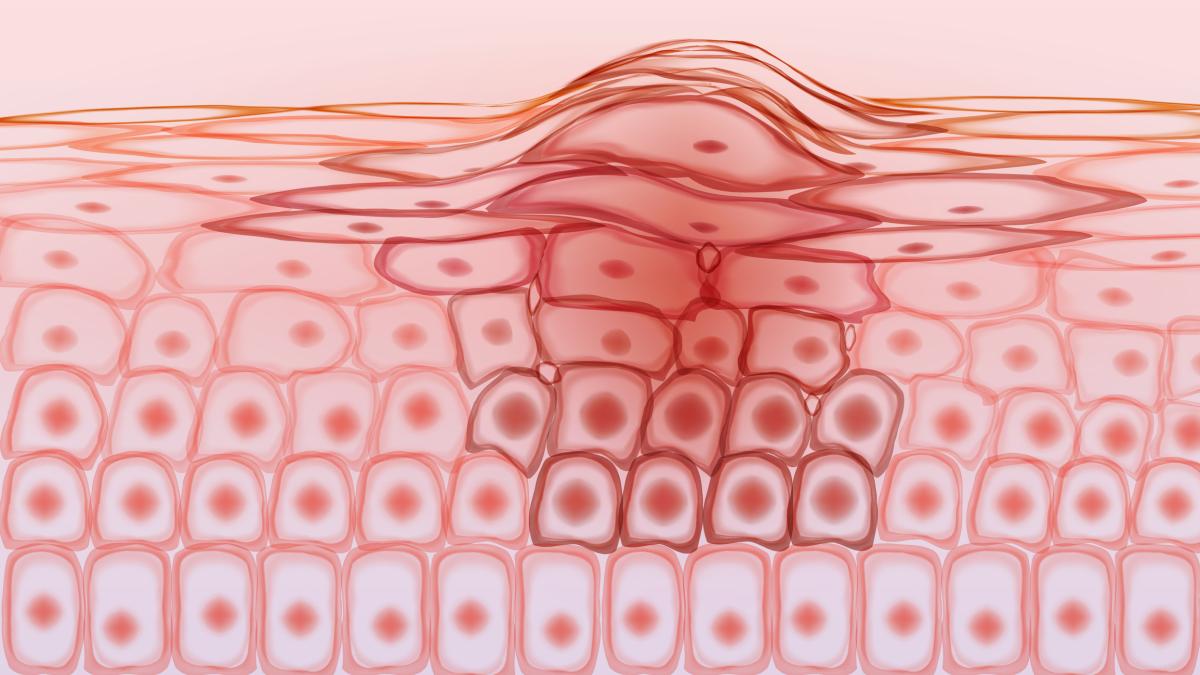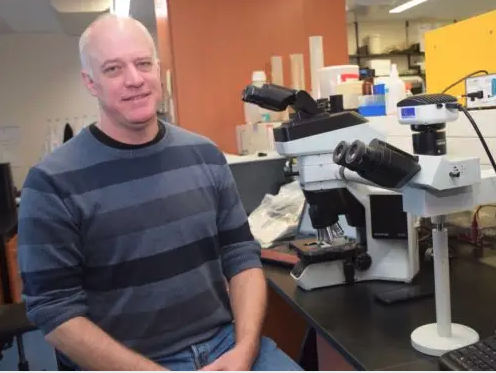On the Forefront of Veterinary Medicine
Cancer researcher hopes his work will help pet owners make difficult decisions

Pathology, the study of disease, is commonly referred to as the bridge between science and medicine. Pathologists play a critical role in research: they help to advance medicine by developing new treatments or ways to fight infections, viruses and diseases, such as cancer.
The world of cancer research is intricate. One veterinary specialist is working to unlock the key to the diagnosis and prediction of outcomes in cancers affecting pets.
In photo: Illustration of skin cancer developing.
Cancer researcher Dr. Geoffrey Wood is a specialist in veterinary pathology and co-director of the Institute for Comparative Cancer Investigation at the Ontario Veterinary College (OVC). In his current work, he is comparing the behaviour of cancer calls across various species to better understand how the disease can be effectively managed. His hope is that this research will benefit not only companion animals, but potentially all species, including humans. In addition to studying dogs and cats, Wood’s work also includes long-lived animals like horses, whales and elephants.
“Thousands of mutations exist when it comes to cancer,” Wood says. “When we look at the same disease in two different species, we can start to uncover commonalities to help direct efforts towards a better target for therapy – this is our ultimate goal.”
Dogs may hold the key for unlocking answers in many species.
Wood is investigating ways to use mutations in cancerous tumours to help predict patient outcomes. He says the answer may involve micro RNA, commonly abbreviated as miRNA, which are very small functional and versatile molecules that are made by cells. Hundreds of miRNA exist in the body, and their primary purpose is gene regulation. Wood explains that changes in one miRNA can have a big effect on cells and have striking similarities across species.
Wood’s lab isn’t just dedicated to studying one type of cancer. Rather, the work tackles multiple disease types across various species, and Wood is heavily investing time, funds and efforts into research he hopes will help pet owners make difficult decisions. He hopes to be able to unlock some long-asked questions about how and why disease occurs and how we can predict outcomes in patients.
Wood is working toward the ability to diagnose and predict the outcome of canine cancer patients with a simple blood test. Whether it is bone cancer, blood cancer, hemangiosarcoma (cancer of the blood vessels) or another type of cancer, the same principles may apply when we are looking for answers and potential solutions, Wood says.
Photo: Dr. Geoffrey Wood is an Associate Professor in the Department of Pathobiology at the University of Guelph.

In January 2019, Wood and his collaborators published the first study to compare cancer genomes across human, canine and equine tumours in mucosal melanoma. The research team sequenced the genomes of mucosal melanoma tumours from 46 humans, 65 dogs and 28 horses; they discovered a handful of genes that were commonly mutated in all species. The study not only showed the commonalities in mutations across species in the same kind of tumour, but it showed differences too. Wood says his work opens the door to be able to do this on a larger scale; after all, it had never been done with three species before.
In a more recent study, Wood and his colleagues found some-thing they didn’t expect in blood samples of dogs who had been diagnosed with an aggressive type of lymphoma: multiple miRNAs that may be of interest for detection and for the forecasting and prediction of lymphoma in dog patients. While the discovery of miRNAs as effective biological markers for human cancer is an active area of research, there are currently limited studies exploring miRNAs in canine cancer.
Wood’s work demonstrates the many advantages to the medical and research community of recognizing and using dogs as a model for understanding disease – specifically cancer.
“Spontaneous tumours in dogs are gaining recognition as ‘models’ of human cancers for the development of therapies that can benefit both species,” Wood says. “Our research shows the importance of understanding the genetic similarities and differences of cancers across species so that the most biologically relevant drug targets are prioritized.”
Wood highlights that OVC Pet Trust provides unparalleled and valuable resources and tools for his team’s research endeavours, particularly having access to the Companion Animal Tumour Sample Bank (CATSB), located within the OVC Health Sciences Centre and supported through The Smiling Blue Skies Cancer Fund.
“Diseases that occur in multiple species are very important to study,” Wood advocates. “The pathogenesis, or more simply put, how disease develops, particularly in cancer patients, may hold clues for the greater scientific and medical community at large.”

